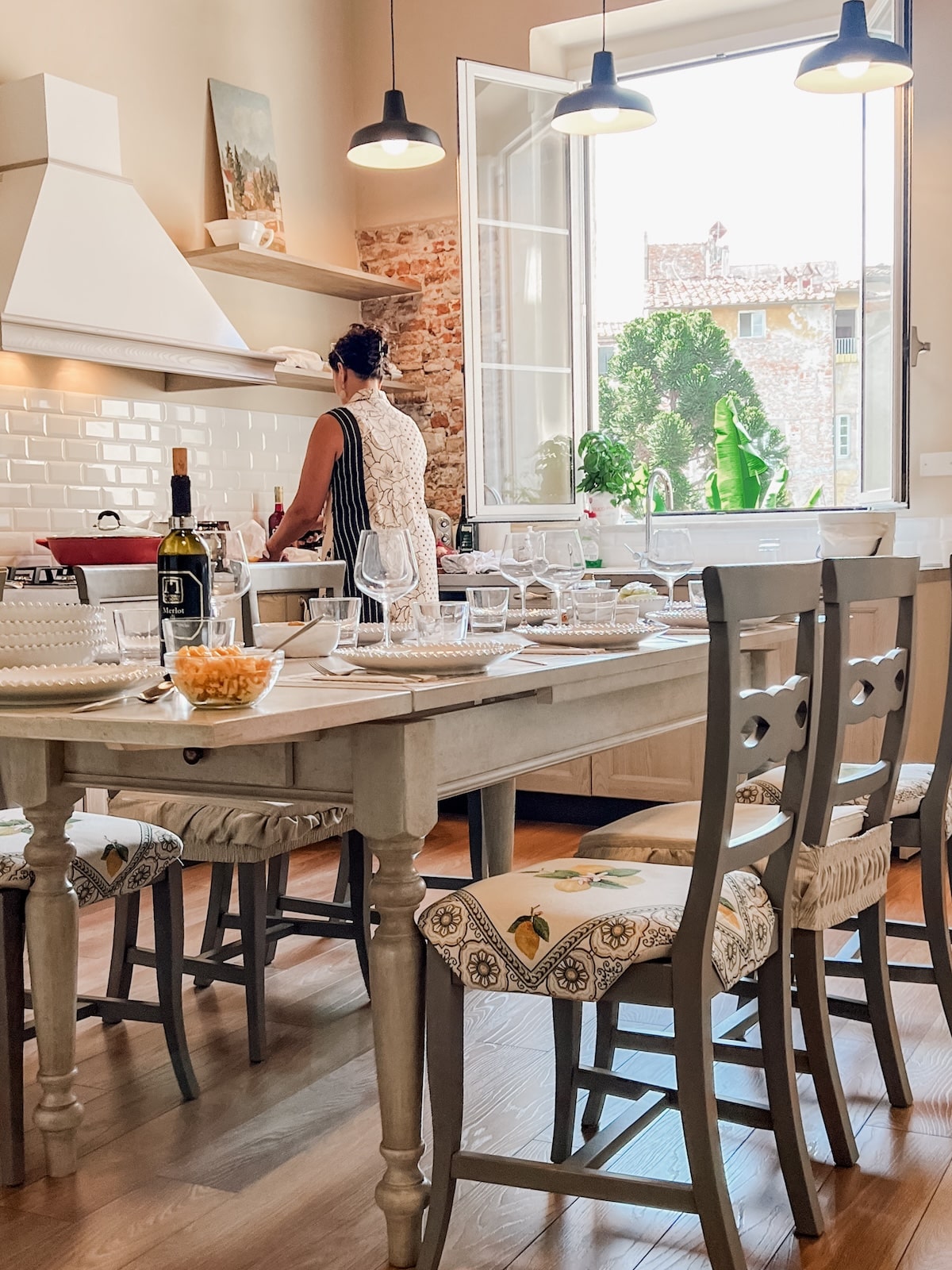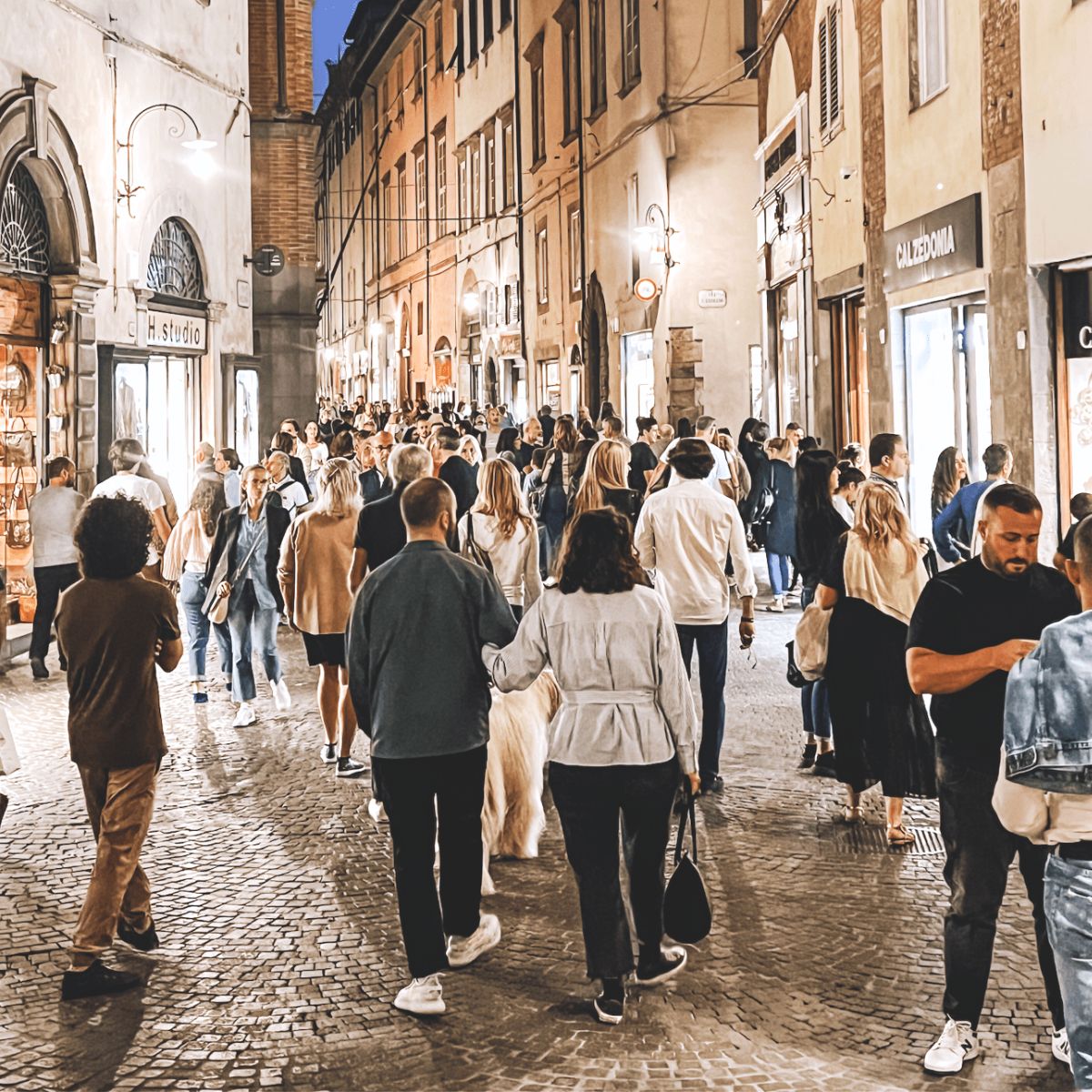Planning your dream Tuscany trip can feel overwhelming. Learn what you need to know to make it easier—from the best places to visit to tips on accommodations, transportation, and more.
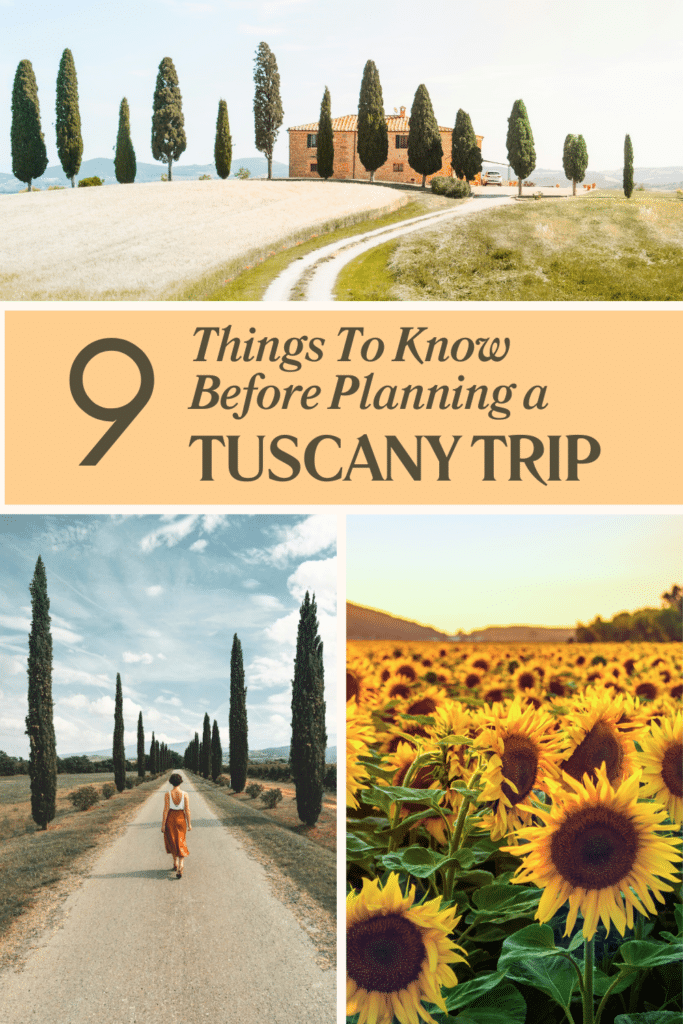
Tuscany is one of those places that can easily overwhelm you—in the best way possible.
There’s so much to choose from that planning your dream trip can feel like a challenge. Even after years of living part-time in Tuscany, I still find new surprises around every turn.
In this guide, I’ll share 10 things you should know before planning your Tuscany trip.
After all, the key to a great trip isn’t about cramming in every popular attraction you’ve read about in a guidebook—it’s about designing a trip that feels just right for you.
1. What Are The Best Places To Visit In Tuscany?

Florence – The cradle of the Renaissance, filled with world-famous art, architecture, and history. Visit the Uffizi Gallery, the Duomo, stroll across the Ponte Vecchio, and explore the quieter neighborhood of Oltrarno.
Siena – A stunning medieval city known for its preserved Gothic architecture, the famous Palio horse race, and the striking Piazza del Campo.
Pisa – Home to the iconic Leaning Tower. Also explore the lesser-known Piazza dei Miracoli and its stunning cathedral.
Lucca – A charming walled city perfect for slow travel, where you can bike around the historic walls and enjoy beautiful piazzas and churches.
San Gimignano – Known as the ‘Town of Fine Towers,’ it’s famous for its medieval skyline and well-preserved tower houses.
Montepulciano – A picturesque hilltop town renowned for its Vino Nobile wine, medieval architecture, and sweeping views over the Val d’Orcia.
Montalcino – Famous for Brunello di Montalcino wine, this town offers a quiet atmosphere with vineyards and ancient fortresses to explore.
Pienza – A small Renaissance town known for its pecorino cheese, beautiful views of the Val d’Orcia, and historic town planning.
Volterra – A lesser-known town with Etruscan roots, offering a mix of ancient history, medieval architecture, and a peaceful ambiance.
Cortona – A hilltop town made famous by Under the Tuscan Sun, with panoramic views, charming streets, and a relaxed atmosphere.
Val d’Orcia – A UNESCO World Heritage landscape that epitomizes Tuscany with its rolling hills, cypress trees, and charming villages like Pienza and San Quirico d’Orcia.
Chianti Region – Famous for its wine and beautiful vineyards, this area is perfect for wine tours and picturesque countryside drives.
Arezzo – Known for its art, history, and antique markets, Arezzo is a less touristy city with a rich medieval history and beautiful churches.
Elba Island – A part of Tuscany with stunning beaches, crystal-clear waters, and Napoleonic history, perfect for a seaside escape.
Fiesole – Just outside Florence, this hilltop town offers panoramic views over the city and ancient Roman ruins.
2. How To Choose Which Places To Visit?

What are you the most interested in? Curate your itinerary around that.
For Food and Wine Lovers
Tuscany is one of the most renowned food regions in Italy. Picture yourself in Florence, where you can dive into the local food scene—think about enjoying a bistecca fiorentina or wandering through the Mercato Centrale, surrounded by fresh local produce.
Then there’s Chianti, where you could spend a day tasting Chianti Classico in charming towns like Greve.
In Montalcino, you’ll find Brunello wine calling your name, while Montepulciano is the perfect spot to sip Vino Nobile in beautiful Renaissance surroundings.
San Gimignano not only has those iconic towers, but you’ll also love their Vernaccia di San Gimignano, a crisp white wine that pairs perfectly with the view.
If cheese is more your thing, head to Pienza to try Pecorino di Pienza, either straight from the local cheese makers or in a classic Pici al Cacio e Pepe dish. And don’t forget Lucca, where you can blend history with tastings of olive oil and traditional Tuscan cuisine.
For History Enthusiasts
If you’re a history buff, Tuscany is like stepping into a living museum.
Florence is a must-see as the birthplace of the Renaissance, where you can explore iconic sites like Palazzo Vecchio, Ponte Vecchio, and the Medici Chapels.
Siena offers a window into medieval Italy, with its beautiful Piazza del Campo, Gothic cathedral, and the 17 historic contrade (districts) that bring the past to life.
In San Gimignano, the “Town of Fine Towers,” you’ll find 14 well-preserved medieval towers that showcase medieval architecture and urban planning.
Pienza, a Renaissance “ideal city” designed by Pope Pius II, offers a perfect example of 15th-century urban design.
Volterra takes you even further back with its Etruscan origins, Roman ruins, and medieval walls.
Lucca is known for its intact Renaissance-era city walls, as well as its historical churches and former amphitheater turned into a lively piazza.
Arezzo is full of history, with Etruscan and Roman ruins, medieval churches, and Renaissance art, including frescoes by Piero della Francesca.
The small walled town of Monteriggioni feels like a time capsule, largely unchanged since the 13th century, giving you a true taste of medieval life.
And of course, Pisa offers more than just its Leaning Tower—the Piazza dei Miracoli is a UNESCO World Heritage site, full of remarkable Romanesque architecture.
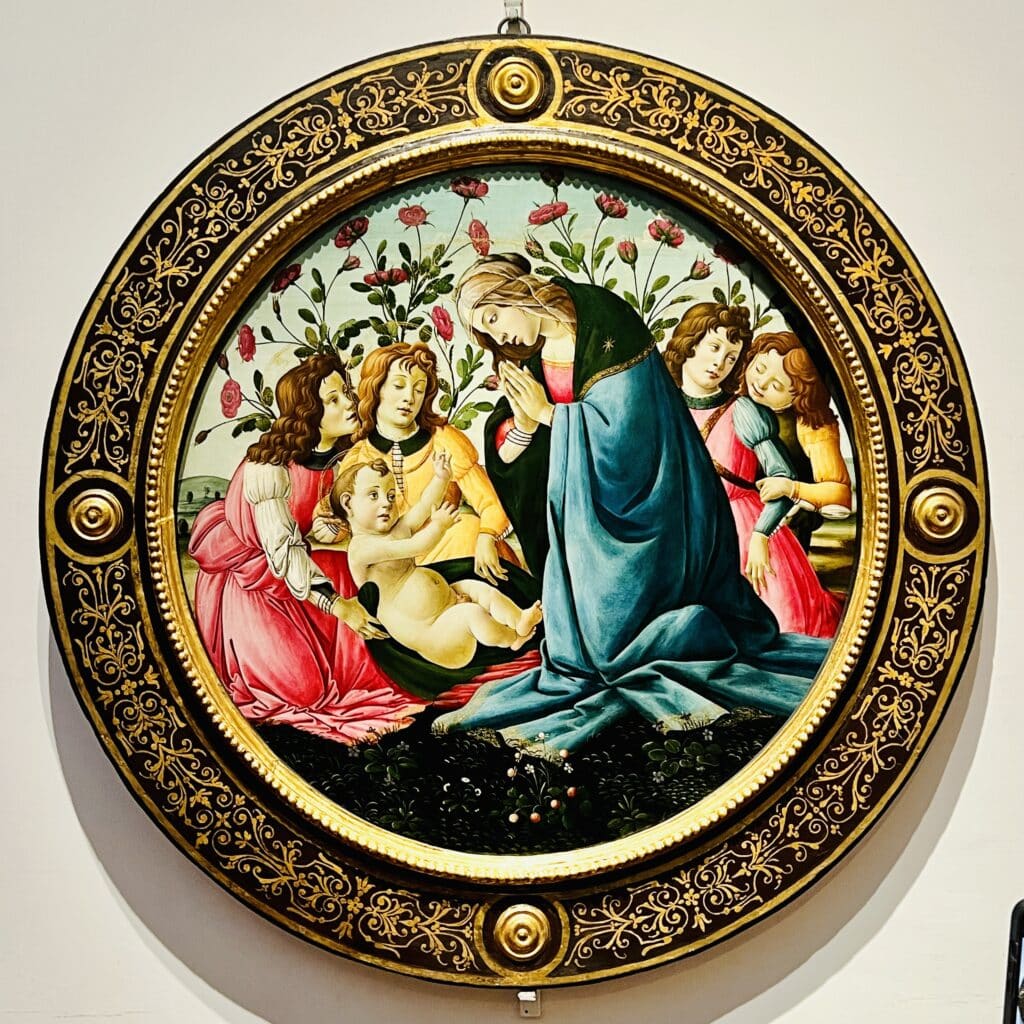
For Art and Culture Seekers
If you’re an art and culture lover, Tuscany is the perfect place for you. Florence is a must-see, known as the “Cradle of the Renaissance.” You’ll find incredible art and architecture here, from the masterpieces at the Uffizi Gallery to Michelangelo’s David at the Accademia.
Then there’s Siena—its Gothic architecture and stunning cathedral will take your breath away.
Of course, Pisa isn’t just about the Leaning Tower. The Piazza dei Miracoli and its magnificent cathedral are just as impressive.
Over in Lucca, you can walk along the medieval walls and feel like you’ve stepped back in time.
San Gimignano is all about those iconic towers, while Montepulciano gives you a taste of grand Renaissance architecture with incredible views of the valleys below.
And then there’s Pienza, a perfectly designed Renaissance town that feels like stepping into a living piece of history.

For Nature Lovers
If you’re a nature lover, Tuscany has so much to offer. Migliarino San Rossore Massaciuccoli Nature Park is great for biking and enjoying the scenery around Lake Massaciuccoli.
In southern Tuscany, Maremma Regional Park has everything from sandy beaches to rocky cliffs, perfect for hiking and birdwatching.
Visit Argentario Marine Park, where you can sail and scuba dive.
Hike the mountain trails of Foreste Casentinesi National Park, and visit the Orecchiella Nature Reserve near Lucca to be surrounded by stunning mountain landscapes.
Don’t miss biking through the Val d’Orcia, with its rolling hills and cypress trees, for the most classic Tuscan experience.
And if you’re near Florence, Fiesole is a great spot for scenic walks and trails with panoramic views of the city and the surrounding countryside.
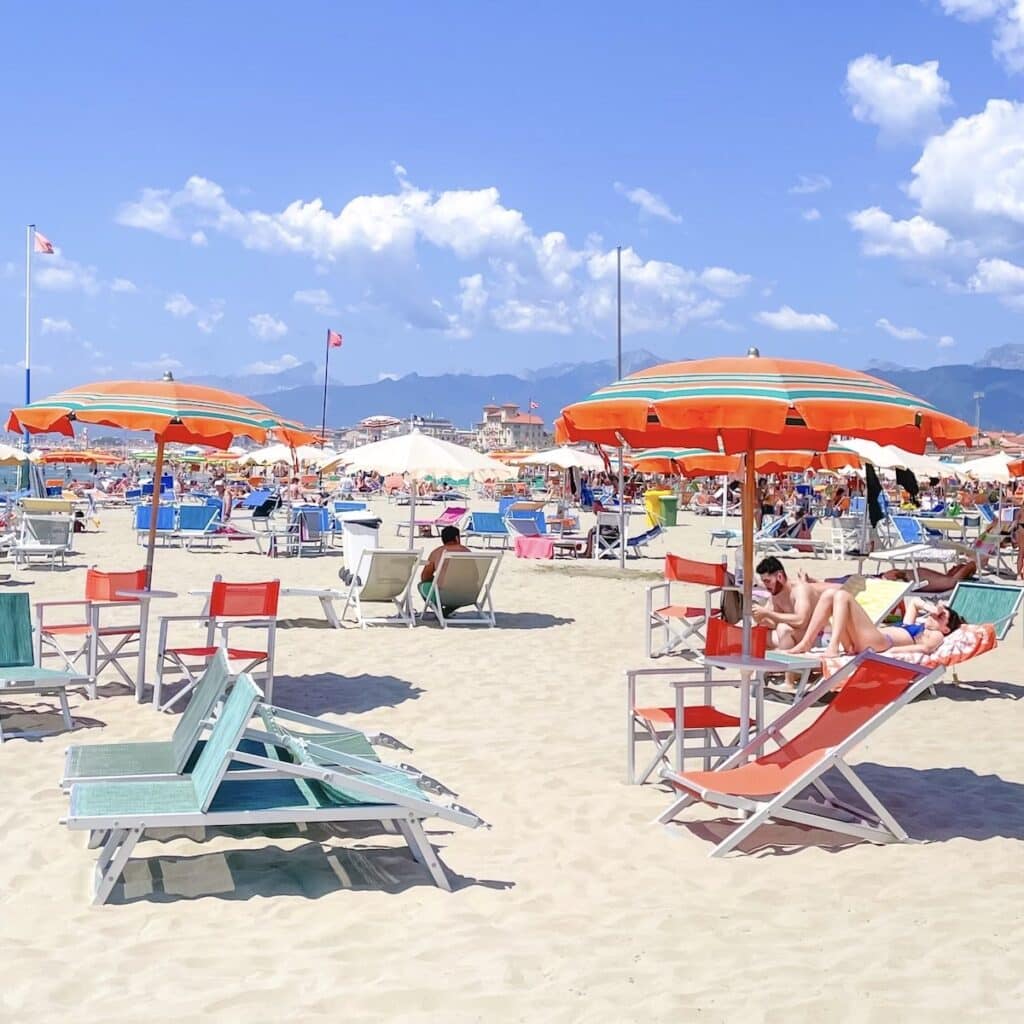
For Coastal Enthusiasts
If the coast is where you like to be, Viareggio is perfect with its long sandy beaches and its lively promenade.
Forte dei Marmi has a taste of luxury, with its chic boutiques and beach clubs.
Looking for something with a mix of beach and local flavor? Castiglione della Pescaia gives you that, with plenty of great spots to eat and enjoy the views.
For families, Follonica has shallow waters and a fun atmosphere.
Porto Ercole has peaceful views and a quiet harbor—perfect for unwinding.
And if you’re like me and love a little history with your beach time, Elba Island has both.
Want somewhere quieter? Talamone is just right, with its rugged cliffs and a more laid-back vibe.

3. How Many Days Should You Spend In Tuscany?
I recommend spending at least three days in Tuscany. You’ll have enough time to enjoy a day or two in Florence while also fitting in some nearby towns.
To really see Tuscany, five days to one week is ideal. You’ll have time to explore more hill towns, maybe take a cooking class, take more indepth art and history guided tours, and allow yourself to “get lost” in the Tuscan countryside. Some of my best memories are of discoveries we made while traveling by car off the beaten path. You can always use Google Maps to get back on track!
If you have ten days or more, even better! You can add in a trip to the Tuscan coast, take a cooking class, go on a truffle hunt or enjoy more time wine tasting at local vineyards.
4. What Is The Best Time Of Year To Visit Tuscany?
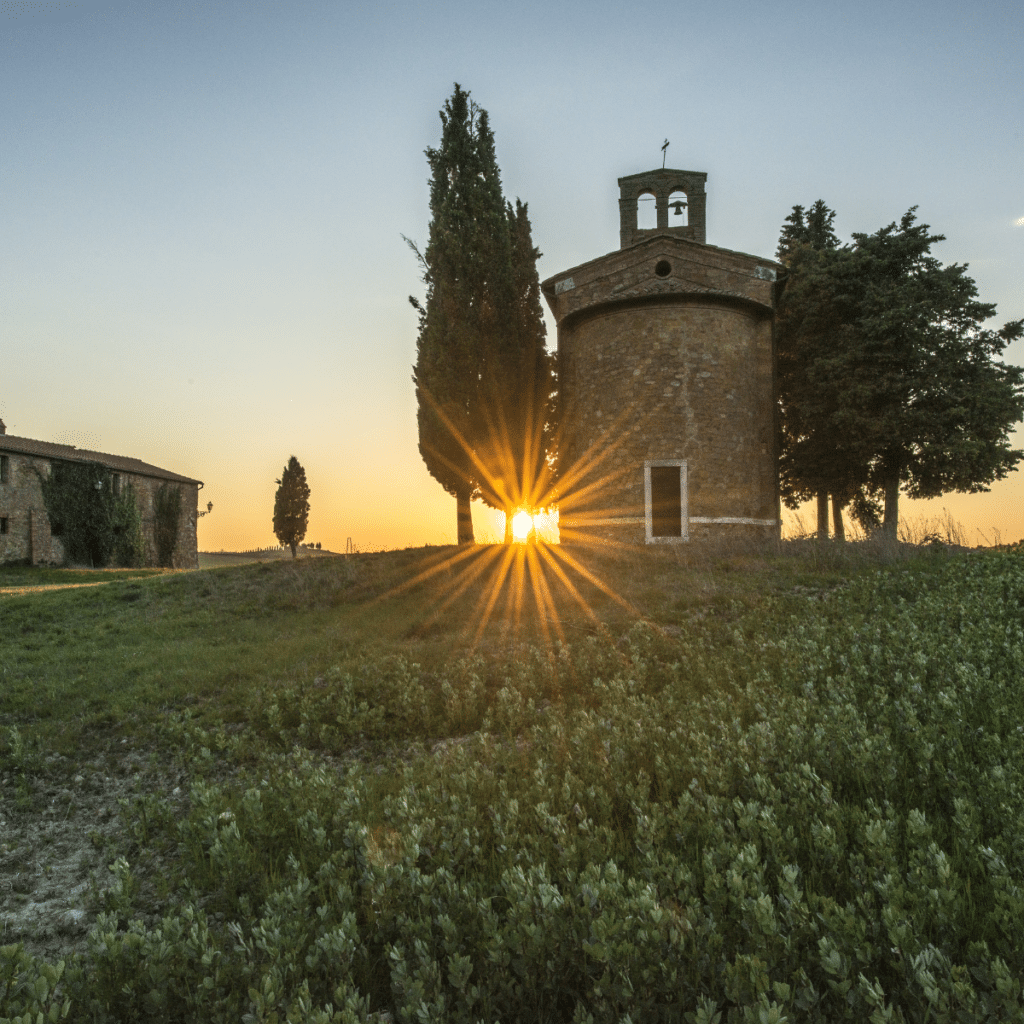
Spring (March to May): If you ask me, spring is one of the best times to explore Tuscany. The air is fresh, the countryside is in full bloom, and the temperatures are mild. You won’t have to battle the summer crowds just yet, and prices for accommodations are still reasonable. Be aware though, April can be a bit unpredictable with rain, so you’ll want to toss an umbrella in your bag just in case.
Summer (June to August): Summer in Tuscany is as lively as it gets—long sunny days, bustling towns, and vineyards full of life. But here’s the thing, it gets hot—we’re talking 90s to 100+ (Fahrenheit) at the peak. And with the heat comes the crowds. Prices shoot up during these months, especially in popular spots like Florence and Siena. If you’re thinking of a summer trip be sure to book early—things fill up fast this time of year.
Fall (September to November): Autumn is perfect if you’re after warm days, cooler nights, and—if you’re a wine lover—harvest season. The vineyards start showing off their golden and crimson colors, making it a beautiful time for those scenic drives through the countryside. September is still warm enough for outdoor activities, while October starts to cool down. You’ll find fewer crowds, and accommodation prices start to ease up. Just keep in mind that November can be pretty rainy, so pack some layers and plan for a few indoor activities.
Winter (December to February): Now, if you’re someone who enjoys a quieter, slower pace, winter might be just what you need. Tuscany slows down in the colder months, and you can wander through Florence, Siena, or Lucca without the usual rush of tourists. Plus, you’ll catch some of the lowest prices of the year. Just be prepared for colder weather—temperatures can drop into the 40s and 50s (Fahrenheit). Rain picks up, especially in January and February. Many countryside accommodations and restaurants might close, but the peace and quiet can be worth it.
5. What Is The Best Home Base For A Tuscany Stay?
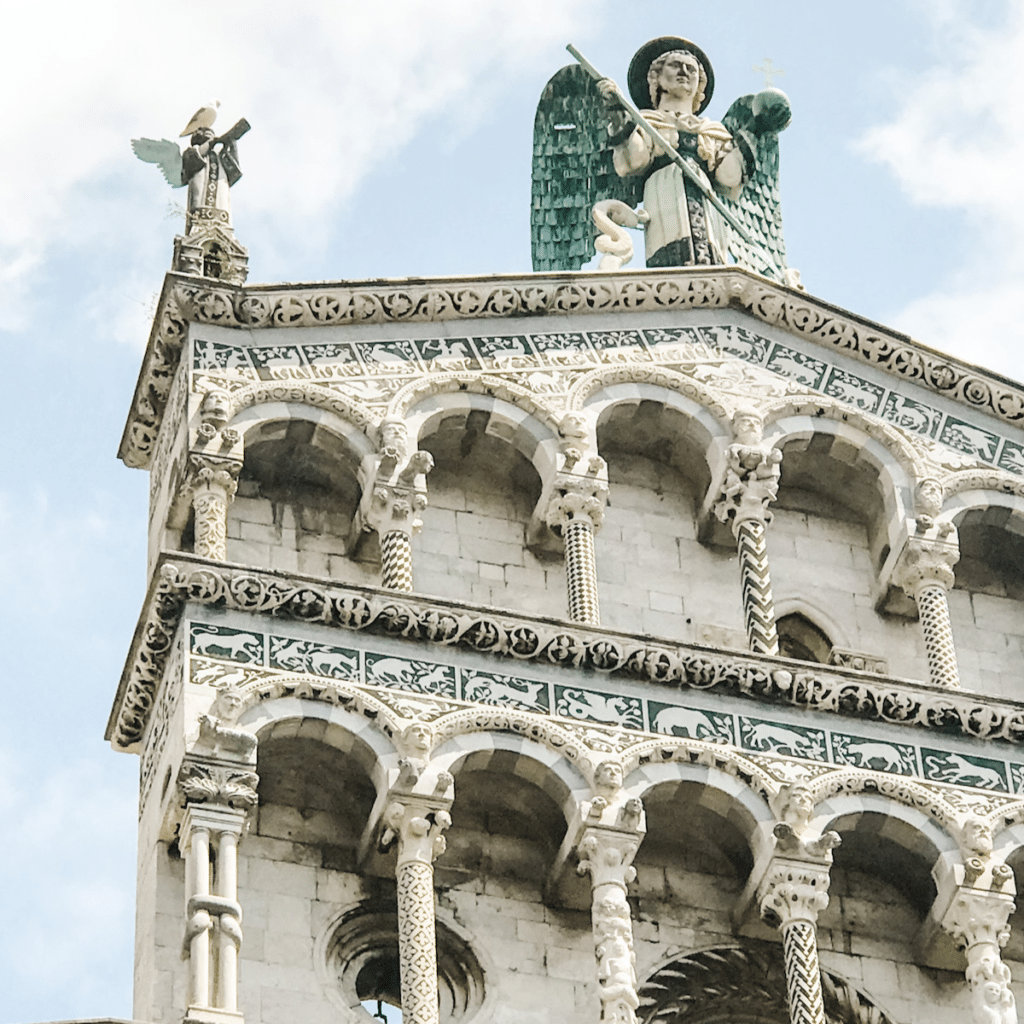
Choosing the right base in Tuscany can have a big impact on your trip, influencing how easily you explore the region and manage your time.
Whether you’re leaning toward the lively energy of a city, the peace of the countryside, or a bit of both, there are several great options based on your travel style.
As you plan, I also recommend using the Rome2Rio app to gauge how long it will take to reach the places you want to explore. It’s a helpful tool when deciding whether to stay in one spot or move around, ensuring your home base makes sense for your itinerary.
Let’s explore some of the best locations to call “home” while exploring Tuscany:
Florence: If you’re a first-time visitor or love the idea of being surrounded by Renaissance art, Florence is a great place to base yourself. You’ll be in the heart of Tuscany’s cultural hub with easy access to incredible museums, churches, and dining. Plus, Florence is well-connected by train, so you can easily take day trips to nearby towns like Pisa, Lucca, or even Siena without needing a car. The downside? It’s a busy city, so if you’re after quiet countryside vibes, you might want to spend just a few days here before moving on.
Siena: For history buffs and those who want a slightly slower pace, Siena is a fantastic option. It has a rich medieval atmosphere, with winding streets, beautiful piazzas, and that stunning Duomo. From here, you’re well-positioned to explore the surrounding countryside, like the Chianti region or Val d’Orcia, while still having the amenities of a small city. Just know that Siena is a bit less central than Florence, so while you can take day trips, you might spend more time on the road.
Lucca: If you’re looking for something quieter but still love a good historical town, Lucca is a gem (and the place I call my second home!). Enclosed by Renaissance walls, it’s perfect for slow walks or bike rides around the perimeter. It’s also well-located for exploring the northern part of Tuscany and makes for easy day trips to places like Pisa or even the coastal region of Cinque Terre, which is technically in Liguria but close enough for a day trip from Tuscany.
Montepulciano: If wine and countryside views are what you’re after, Montepulciano is a beautiful place to call home for a few days. It’s set in the rolling hills of the Val d’Orcia, with plenty of wineries and gorgeous drives right outside your door. The town itself is charming and full of history, but staying here means you’ll likely need a car to get around. It’s perfect for travelers who want to be immersed in Tuscany’s countryside and don’t mind being a bit more off the beaten path.
Pros and Cons of Staying in One Location vs. Moving Between Several
Staying in One Place: You won’t have to worry about packing and unpacking or dealing with multiple check-ins. You can settle into your accommodation and get to know the area more deeply, plus it’s less stressful if you prefer a more laid-back pace. The downside? You might spend more time commuting to different towns and sights if your base isn’t centrally located.
Moving Around: Switching locations lets you experience more of what Tuscany has to offer. You could start with a few days in Florence, then head to Siena or a countryside villa for a completely different vibe. It’s a great way to see more without feeling rushed on day trips. Of course, moving around does mean more logistics—packing, navigating, and potentially dealing with different modes of transportation.
6. What Are The Best Accommodation Options In Tuscany?
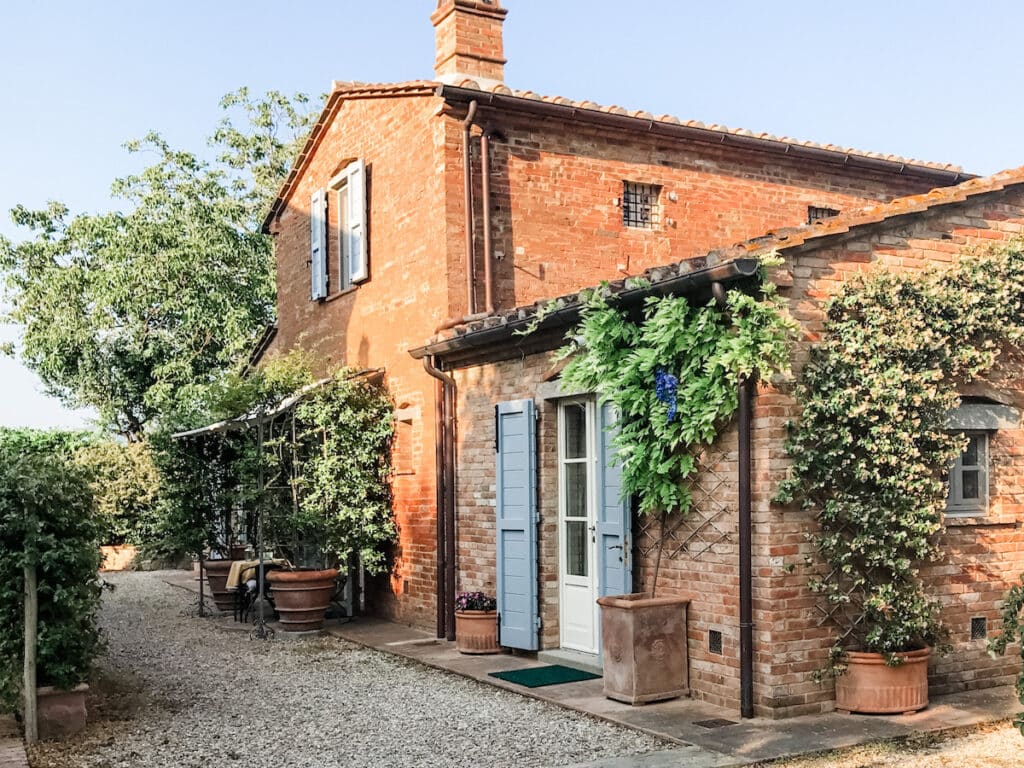
Agriturismos: If waking up to fresh air, endless vineyards, and farm-fresh breakfasts sounds like your kind of escape, an agriturismo is the way to go. These family-run farms are scattered across the Tuscan countryside, offering you a real taste of rural life. Staying at an agriturismo lets you slow down, savor local flavors, and truly connect with the land. Imagine yourself sipping wine on a terrace overlooking rolling hills, then enjoying a meal made with olive oil and produce grown just a few steps away. It’s a peaceful, authentic experience that brings you closer to the essence of Tuscany.
Boutique Hotels: Prefer being closer to the action in a Tuscan city? A boutique hotel might be just the right fit for you. These charming, smaller hotels combine old-world elegance with modern comfort, making them perfect for unwinding after a day of exploring. Often located in historic buildings near lively piazzas, they offer a cozy and personalized stay where the staff might greet you by name, and every detail feels thoughtfully curated. Plus, you’re never far from local restaurants, shops, cafes, and gelatarias!
Vacation Home/Villa Rentals: If you want space and flexibility, a Tuscan vacation home or villa rental is a fantastic option. Whether you’re looking for a quiet retreat in the countryside or a spacious home near one of Tuscany’s towns, these rentals give you the freedom to make the space your own. You can stock the kitchen with fresh ingredients from a local market, dine al fresco in a private garden, and set your own schedule. Villas often come with stunning views, laundry facilities, private pools, and plenty of room for your whole group, making them perfect for families or longer stays where you want to feel more at home. It’s a great way to immerse yourself in Tuscan life while enjoying the comfort and privacy of your own place. For larger parties it’s also more cost effective than a hotel stay.
7. What’s The Best Way To Travel Around Tuscany?
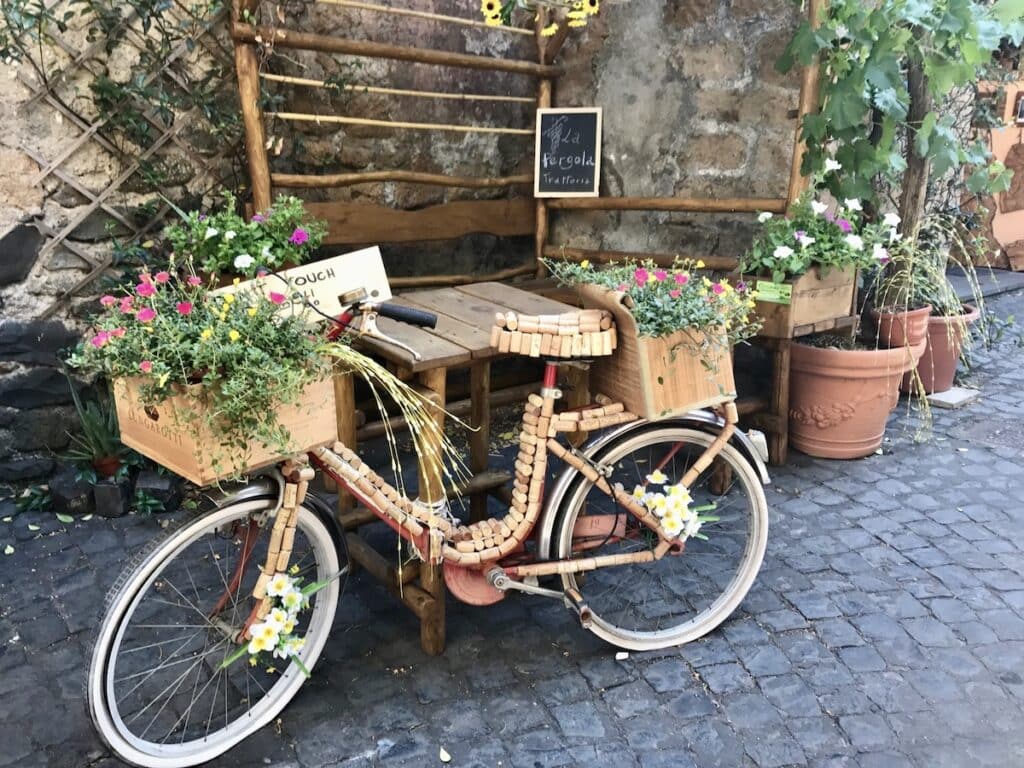
Rental Cars
Dreaming of a Tuscany road trip? Renting a car gives you the most freedom to explore Tuscany’s countryside and small towns at your own pace. However, if you plan to rent a car, Florence is not the best home base—driving in the city can be hectic, and parking is limited. Instead, consider staying in more accessible areas like Siena, Lucca, or a countryside location such as the Val d’Orcia. These places offer easy parking and make it convenient to set off on day trips to explore the surrounding region.
Guided Tours
If you prefer to leave the planning and driving to someone else, guided tours are a fantastic option. They are an additional cost but are a great option if you’re staying in a city and don’t want to worry about the logistics of getting from one place to another. Just note that guided tours might be less flexible for exploring more remote or lesser-known areas.
Private Car Services
Private car services offer a personalized, comfortable way to explore Tuscany without the need to rent a car. This option works well for any type of home base, including cities like Florence and Lucca, where driving can be difficult, or even more remote countryside locations where you’d prefer to be driven. While this is the most expensive option, it allows you to enjoy the comfort of being chauffeured from place to place no matter where you’re staying.
Trains
Trains are a stress-free way to travel between Tuscany’s main cities—such as Florence, Pisa, Siena, and Lucca—making them perfect for city-focused itineraries. However, if you plan to rely on trains, it’s best to choose a city as your home base, since the train network doesn’t reach rural areas or small countryside towns. Avoid basing yourself in the countryside if you’re not renting a car, as it can be challenging to get around without access to train stations or other public transportation.
8. Which Airport is Best for Flying into Tuscany?
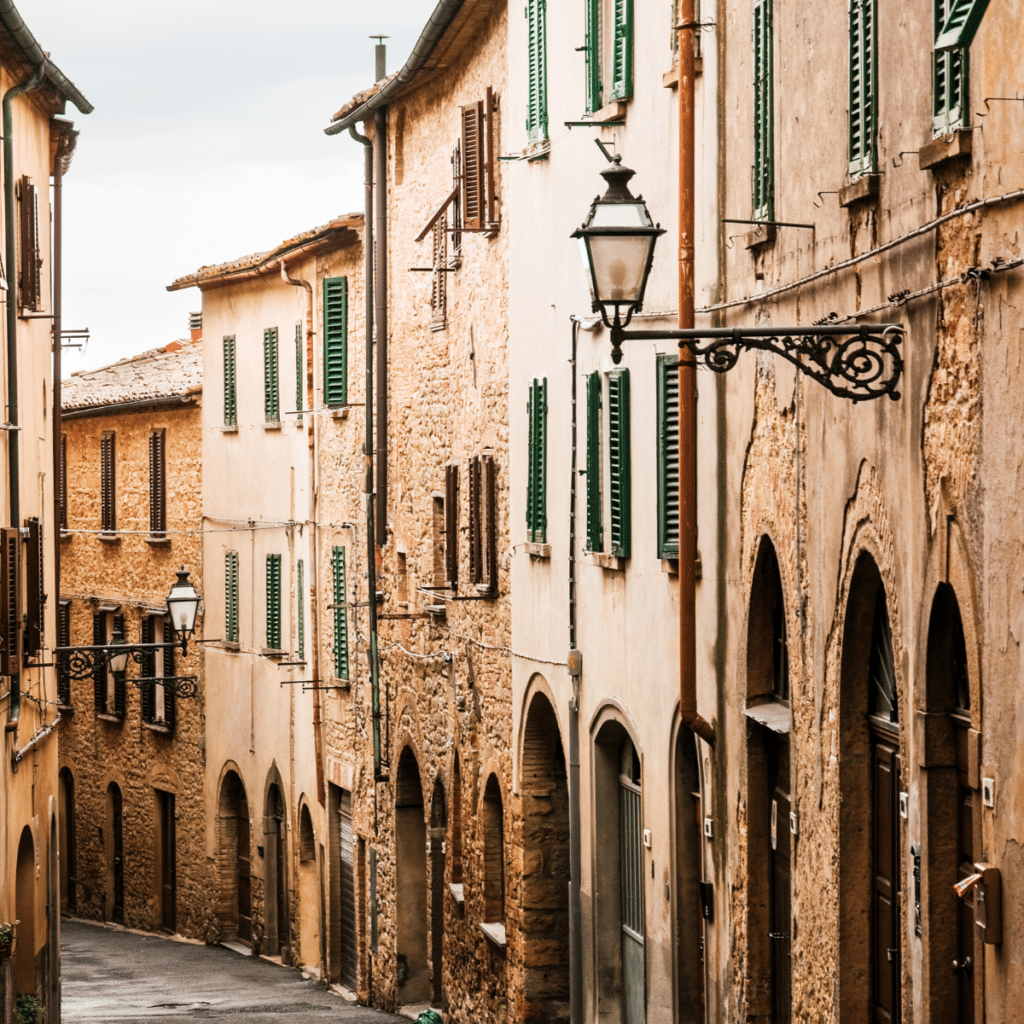
There are a few options depending on how you want to begin your trip.
Florence Airport (Amerigo Vespucci): If you’re kicking off your trip in Florence, this is the most convenient option. It’s just a short taxi ride to the city center, so you can get settled and start exploring quickly. Keep in mind, though, it’s a smaller airport, so flights can be more limited, especially if you’re coming from overseas.
Pisa Airport (Galileo Galilei): Pisa’s airport has more flight options than Florence and is only about an hour by train or car to Florence, and even closer to Lucca. It’s a great choice if you’re planning to explore the western part of Tuscany or the coast.
Rome Airport (Fiumicino): If you’re flying in from further abroad, Rome’s airport will likely have the most direct flights. It’s about a three-hour train ride to Florence, so while it’s a bit of a journey, you’ll get a scenic ride through the Italian countryside. Plus, if Rome’s on your list, you can easily combine both cities into one trip.
9. Is It Expensive To Visit Tuscany?
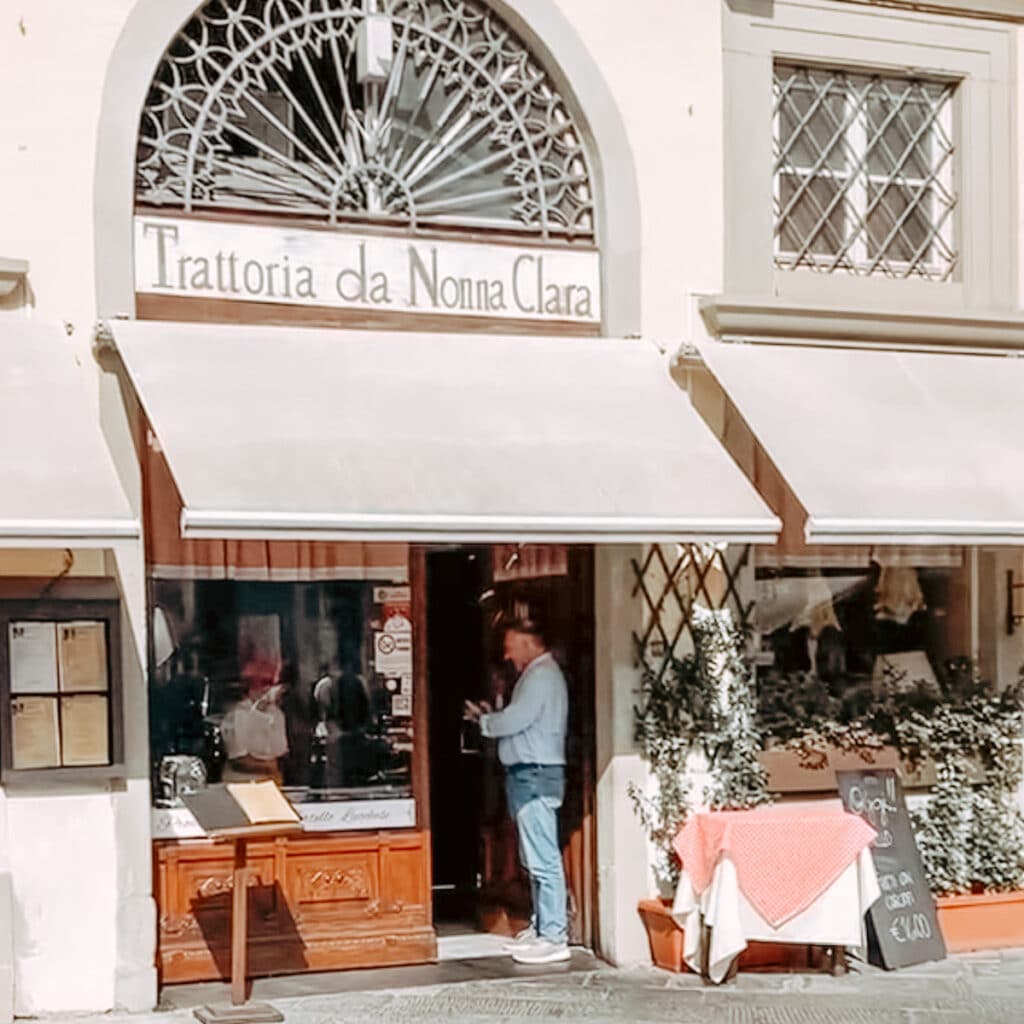
Traveling in Tuscany can be as expensive or affordable as you make it, depending on your preferences and choices. If you’re looking for luxury, you’ll find high-end hotels, gourmet dining, and exclusive tours that can add up quickly. On the other hand, staying in an agriturismo or a vacation rental, eating at local trattorias, and exploring on your own can help keep costs down. Tuscany’s great for slow travel, so spending more time in fewer places might also stretch your budget further. The key is balancing your must-do splurges with more budget-friendly choices. Whether you’re a luxury traveler or watching your wallet, Tuscany offers options for every kind of traveler.
Final Thoughts…
So, there you have it! We’ve covered the best places to visit, tips for choosing your ideal home base, the best times of year to go, and how to get around, whether by car, train, or guided tour. With the right mix of planning and flexibility, you can truly tailor this trip to match your style and interests—whether it’s exploring the Renaissance treasures of Florence, sipping red wine in Chianti, or finding quiet moments in the rolling hills of the Val d’Orcia.
Make sure your Italy trip goes off without a hitch! Grab my free guide on the top 5 mistakes to avoid when planning your adventure in Italy! Download the guide here!
FAQ’s
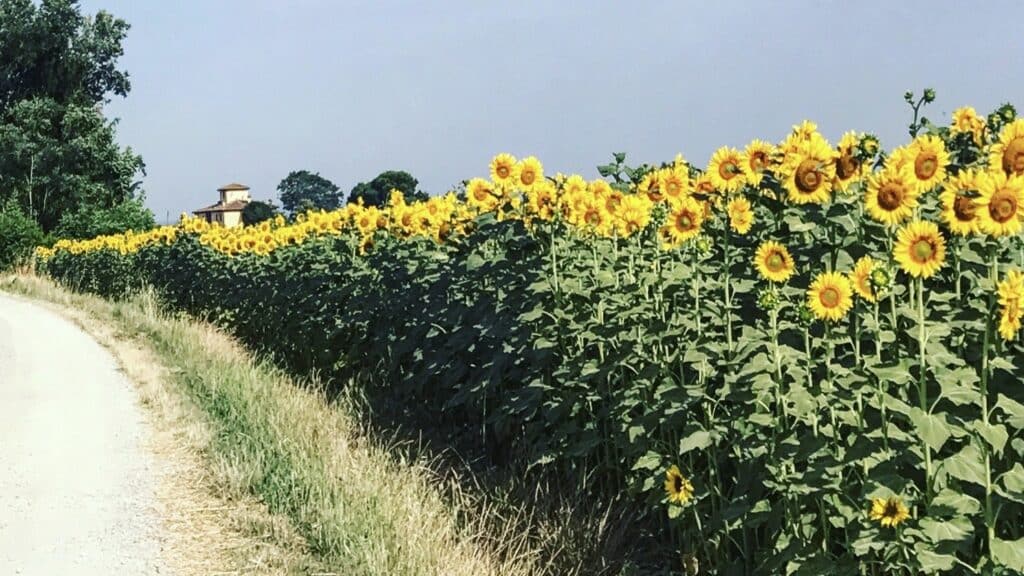
What is the best way to see Tuscany?
Renting a car gives you the freedom to explore at your own pace. You can easily visit hilltop towns like San Gimignano, Siena, and Pienza, take scenic drives through the countryside, and stop at vineyards or local spots whenever something catches your eye. It’s all about flexibility—you’re in control of your schedule and where you go.
If you’d rather skip the driving, guided tours are a great option. They take care of transportation, and you can enjoy day trips from Florence to places like Chianti, Siena, and Pisa without the hassle of navigating. Plus, many tours offer wine tastings and food experiences, so you’ll still get a true taste of Tuscany without the planning.
Do I need to know Italian to travel in Tuscany?
While knowing some basic Italian phrases can be helpful, especially in rural areas, many people in the more touristy parts of Tuscany speak English. However, locals always appreciate it when you make an effort to speak the language.
Can I visit Tuscany without renting a car?
Yes, it’s possible to explore Tuscany by train or guided tours if you’re mainly visiting cities like Florence, Siena, and Pisa. However, for more rural destinations, a rental car gives you more flexibility and access to the countryside.
Are there any safety concerns in Tuscany?
Tuscany is generally a safe region for travelers. As with any destination, it’s wise to keep an eye on your belongings, particularly in crowded areas like train stations, downtown Florence or tourist hotspots.
Is Tuscany kid-friendly?
Yes, Tuscany offers plenty of family-friendly activities, from visiting vineyards that cater to children, to exploring medieval towns, and even heading to the coast for a beach day. Agriturismos can also be a great choice for families.
Can you Uber in Tuscany?
Uber isn’t really a thing in most of Tuscany, so if you’re used to relying on ride-sharing apps, you’ll need to adjust your expectations. Florence is the exception—you can occasionally find Uber there, but it’s usually Uber Black, which means higher prices and professional drivers. Outside of Florence, taxis are your best bet for getting around without a car. You’ll typically find them in main squares or near train stations, and in smaller towns, you may need to call ahead to book one.
Is it easy to travel around Tuscany without a car?
It’s definitely possible to travel around Tuscany without a car, especially if you’re sticking to the main cities and towns like Florence, Siena, Pisa, and Lucca. These places are well-connected by train, and you can easily hop between them without needing to drive. For smaller towns and rural areas, though, it can be a bit trickier. Public transportation doesn’t always reach the countryside, so you might need to rely on buses or guided tours to get around. If your itinerary is mostly city-based, you’ll be fine without a car, but for a more in-depth experience of the countryside, having your own transportation gives you much more flexibility.

